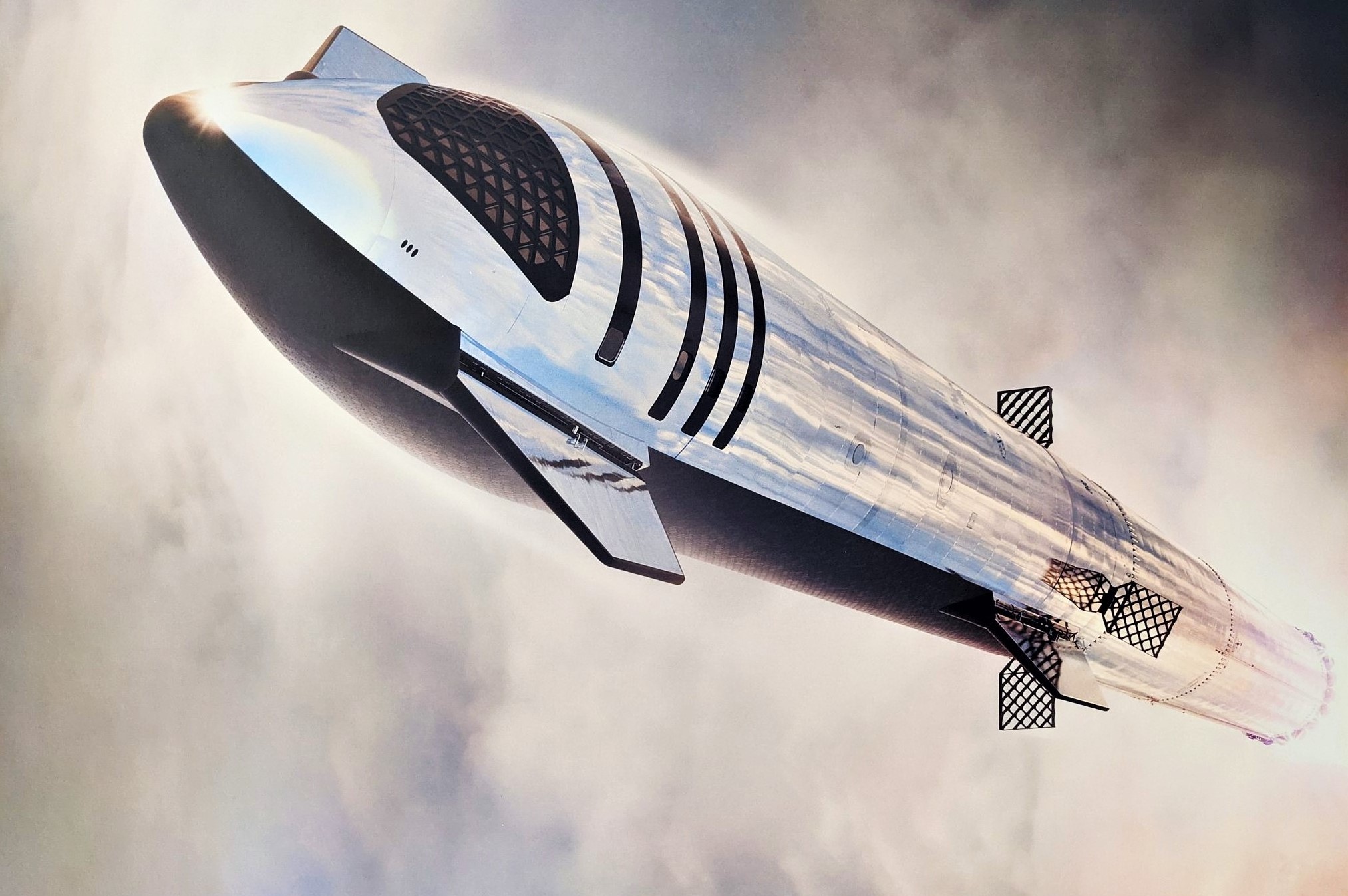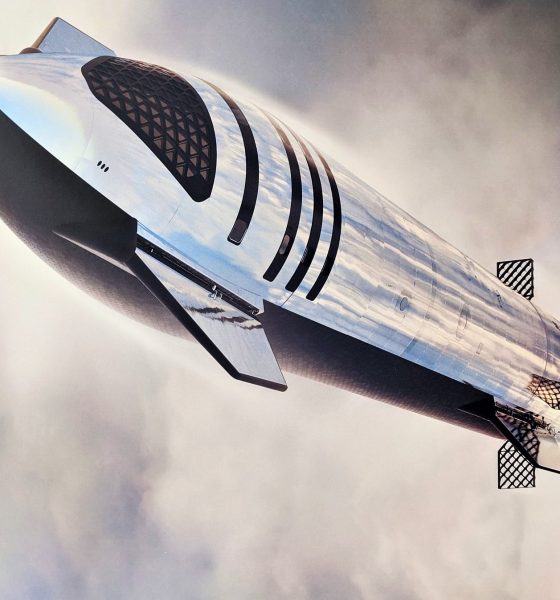

News
SpaceX VP says Starship is already winning commercial launch contracts
A SpaceX executive says that the company’s next-generation, fully-reusable Starship rocket has already secured multiple commercial launch contracts.
Set to debut no earlier than (NET) the first quarter of 2022 with a semi-orbital launch that aims to send Starship about 85% of the way around the Earth, Starship has a ways to go before it’s ready to routinely launch payloads. Nonetheless, SpaceX is confident enough in Starship’s eventual success to have effectively made it the foundation of every one of the company’s future goals – both in the short and long term.
Today, SpaceX’s Falcon rockets have become a spectacularly successful revolution in cost-effective launch through reusability and vertical integration, among other things. Thanks to that unprecedented affordability, SpaceX has been able to kick off the deployment of its Starlink internet constellation, launching more than 1800 satellites and becoming the largest satellite operator in history in less than two and a half years. Where competition is possible, Falcon 9 dominates the global commercial launch market for both small and large satellites. And yet despite its staggering success, Falcon 9 remains at least one or two magnitudes too expensive and too performance-constrained to realize SpaceX’s grander ambitions.
Those overarching goals are simple enough and directly related. First, SpaceX – through Starlink – aims to blanket the Earth’s surface with high-quality, affordable satellite internet that is either indistinguishable from or better than ground-based alternatives, ultimately connecting tens or even hundreds of millions of people to the internet. Second, SpaceX’s founding goal has always been to make humanity a multiplanetary species by enabling the creation of one or several permanent, self-sustaining cities on Mars. For the latter goal, Starship or a fully reusable rocket like it has always been essential – without which it would be prohibitively expensive to launch the sheer mass and volume of supplies needed to build a city on another world.
Recently, if SpaceX’s often hyperbolic CEO is to be believed, Starlink’s success has also become dependent on Starship, with Musk stating in a company-wide memo that SpaceX as a whole could face bankruptcy if Starship isn’t ready to launch 200+ Starlink satellites per month by the end of 2022. While it’s simply untrue that SpaceX is at risk of bankruptcy, there might be some truth behind Musk’s statement. Fearmongering aside, the gist of Musk’s argument is that Starlink is “financially weak” under the current paradigm, where Falcon 9 delivers approximately 50 300-kilogram (~650 lb) satellites to orbit with each launch.
In the same vein as Starship, Musk believes that next-generation “Starlink V2” satellites – several times larger than V1 satellites – will drastically improve the cost-effectiveness of the constellation by allowing SpaceX to squeeze much more network capacity out of every unit of satellite mass. However, making Starlink V2 satellites several times larger would reduce the efficiency of launching them on Falcon 9 by an equal degree – hence the apparently dire need for Starship.
Contrary to Musk’s apocalyptic vision, even if it might be significantly slower and more expensive to deploy, it’s quite likely that a full Starlink V1 constellation launched by Falcon 9 could still be economically viable. What it probably wouldn’t be, though, is exceptionally profitable, which has long been SpaceX’s main plan for funding its multiplanetary dreams. With a Starship capable of achieving its design goals, that could change.
According to Musk and other SpaceX executives, the true cost – before payloads – of a flight-proven Falcon 9 launch is somewhere between $15M and $28M. At an estimated cost of $250-500k apiece, 50-60 Starlink V1 satellites raise the total cost of a Starlink launch to approximately $30-60M – the range between marginal and total cost. In a partially reusable configuration, Falcon 9 is capable of launching about ~16 tons (~35,000 lb) to low Earth orbit (LEO).
Starship, however, is designed to launch at least 100 tons (~220,000 lb) and possibly up to 150 tons (~330,000 lb) to LEO for a marginal cost of as little as $2M. Even if SpaceX is a magnitude off of that target and never gets beyond 100t to LEO, a $20M Starship launch fully loaded with Starlink satellites would still cost five times less than Falcon 9 per unit of satellite mass launched. At 150 tons to LEO for $10M, Starship would cost 15 times less. If SpaceX one day perfects full reusability and marginal costs do fall to $2M, a 150-ton Starship launch could be up to 70 times cheaper than Falcon 9.
For the exact same reasons it could radically improve the cost-efficiency of Starlink deployment and finally make humanity’s expansion beyond Earth affordable enough to be viable, Starship would also inherently revolutionize access to space for all other launch customers – not just SpaceX.
According to SpaceX Vice President of Commercial Sales Tom Ochinero, Starship has already begun to make inroads with SpaceX’s healthy list of existing Falcon customers. While relatively minor and inevitable, it’s still an important symbolic step for SpaceX and Starship as it attempts to deliver a launch vehicle so cheap and capable that it ushers the company’s own Falcon rockets into retirement.

Elon Musk
Elon Musk and Tesla AI Director share insights after empty driver seat Robotaxi rides
The executives’ unoccupied tests hint at the rapid progress of Tesla’s unsupervised Robotaxi efforts.

Tesla CEO Elon Musk and AI Director Ashok Elluswamy celebrated Christmas Eve by sharing personal experiences with Robotaxi vehicles that had no safety monitor or occupant in the driver’s seat. Musk described the system’s “perfect driving” around Austin, while Elluswamy posted video from the back seat, calling it “an amazing experience.”
The executives’ unoccupied tests hint at the rapid progress of Tesla’s unsupervised Robotaxi efforts.
Elon and Ashok’s firsthand Robotaxi insights
Prior to Musk and the Tesla AI Director’s posts, sightings of unmanned Teslas navigating public roads were widely shared on social media. One such vehicle was spotted in Austin, Texas, which Elon Musk acknowleged by stating that “Testing is underway with no occupants in the car.”
Based on his Christmas Eve post, Musk seemed to have tested an unmanned Tesla himself. “A Tesla with no safety monitor in the car and me sitting in the passenger seat took me all around Austin on Sunday with perfect driving,” Musk wrote in his post.
Elluswamy responded with a 2-minute video showing himself in the rear of an unmanned Tesla. The video featured the vehicle’s empty front seats, as well as its smooth handling through real-world traffic. He captioned his video with the words, “It’s an amazing experience!”
Towards Unsupervised operations
During an xAI Hackathon earlier this month, Elon Musk mentioned that Tesla owed be removing Safety Monitors from its Robotaxis in Austin in just three weeks. “Unsupervised is pretty much solved at this point. So there will be Tesla Robotaxis operating in Austin with no one in them. Not even anyone in the passenger seat in about three weeks,” he said. Musk echoed similar estimates at the 2025 Annual Shareholder Meeting and the Q3 2025 earnings call.
Considering the insights that were posted Musk and Elluswamy, it does appear that Tesla is working hard towards operating its Robotaxis with no safety monitors. This is quite impressive considering that the service was launched just earlier this year.
Elon Musk
Starlink passes 9 million active customers just weeks after hitting 8 million
The milestone highlights the accelerating growth of Starlink, which has now been adding over 20,000 new users per day.

SpaceX’s Starlink satellite internet service has continued its rapid global expansion, surpassing 9 million active customers just weeks after crossing the 8 million mark.
The milestone highlights the accelerating growth of Starlink, which has now been adding over 20,000 new users per day.
9 million customers
In a post on X, SpaceX stated that Starlink now serves over 9 million active users across 155 countries, territories, and markets. The company reached 8 million customers in early November, meaning it added roughly 1 million subscribers in under seven weeks, or about 21,275 new users on average per day.
“Starlink is connecting more than 9M active customers with high-speed internet across 155 countries, territories, and many other markets,” Starlink wrote in a post on its official X account. SpaceX President Gwynne Shotwell also celebrated the milestone on X. “A huge thank you to all of our customers and congrats to the Starlink team for such an incredible product,” she wrote.
That growth rate reflects both rising demand for broadband in underserved regions and Starlink’s expanding satellite constellation, which now includes more than 9,000 low-Earth-orbit satellites designed to deliver high-speed, low-latency internet worldwide.
Starlink’s momentum
Starlink’s momentum has been building up. SpaceX reported 4.6 million Starlink customers in December 2024, followed by 7 million by August 2025, and 8 million customers in November. Independent data also suggests Starlink usage is rising sharply, with Cloudflare reporting that global web traffic from Starlink users more than doubled in 2025, as noted in an Insider report.
Starlink’s momentum is increasingly tied to SpaceX’s broader financial outlook. Elon Musk has said the satellite network is “by far” the company’s largest revenue driver, and reports suggest SpaceX may be positioning itself for an initial public offering as soon as next year, with valuations estimated as high as $1.5 trillion. Musk has also suggested in the past that Starlink could have its own IPO in the future.
News
NVIDIA Director of Robotics: Tesla FSD v14 is the first AI to pass the “Physical Turing Test”
After testing FSD v14, Fan stated that his experience with FSD felt magical at first, but it soon started to feel like a routine.

NVIDIA Director of Robotics Jim Fan has praised Tesla’s Full Self-Driving (Supervised) v14 as the first AI to pass what he described as a “Physical Turing Test.”
After testing FSD v14, Fan stated that his experience with FSD felt magical at first, but it soon started to feel like a routine. And just like smartphones today, removing it now would “actively hurt.”
Jim Fan’s hands-on FSD v14 impressions
Fan, a leading researcher in embodied AI who is currently solving Physical AI at NVIDIA and spearheading the company’s Project GR00T initiative, noted that he actually was late to the Tesla game. He was, however, one of the first to try out FSD v14.
“I was very late to own a Tesla but among the earliest to try out FSD v14. It’s perhaps the first time I experience an AI that passes the Physical Turing Test: after a long day at work, you press a button, lay back, and couldn’t tell if a neural net or a human drove you home,” Fan wrote in a post on X.
Fan added: “Despite knowing exactly how robot learning works, I still find it magical watching the steering wheel turn by itself. First it feels surreal, next it becomes routine. Then, like the smartphone, taking it away actively hurts. This is how humanity gets rewired and glued to god-like technologies.”
The Physical Turing Test
The original Turing Test was conceived by Alan Turing in 1950, and it was aimed at determining if a machine could exhibit behavior that is equivalent to or indistinguishable from a human. By focusing on text-based conversations, the original Turing Test set a high bar for natural language processing and machine learning.
This test has been passed by today’s large language models. However, the capability to converse in a humanlike manner is a completely different challenge from performing real-world problem-solving or physical interactions. Thus, Fan introduced the Physical Turing Test, which challenges AI systems to demonstrate intelligence through physical actions.
Based on Fan’s comments, Tesla has demonstrated these intelligent physical actions with FSD v14. Elon Musk agreed with the NVIDIA executive, stating in a post on X that with FSD v14, “you can sense the sentience maturing.” Musk also praised Tesla AI, calling it the best “real-world AI” today.








